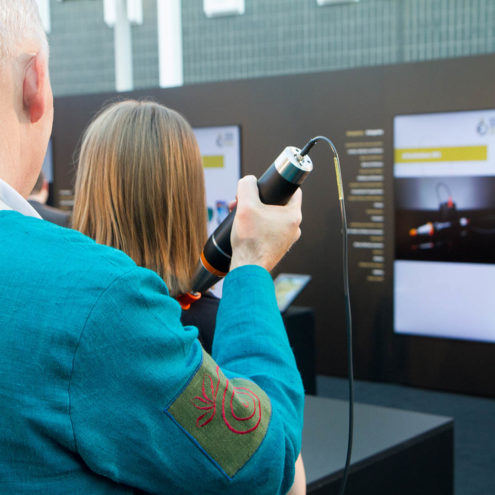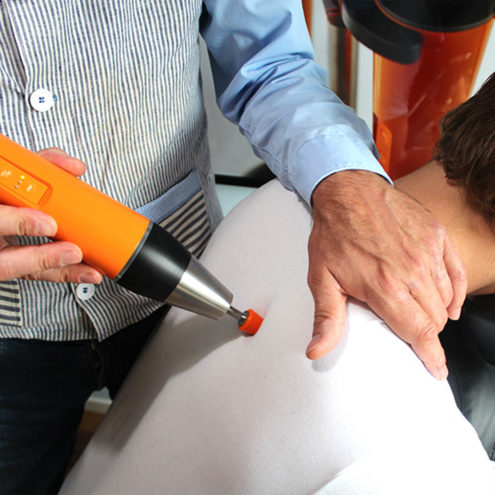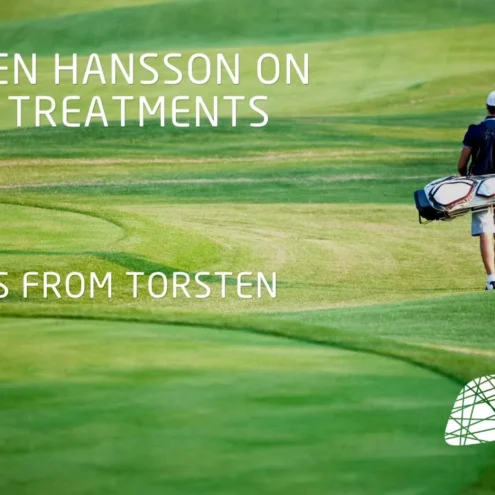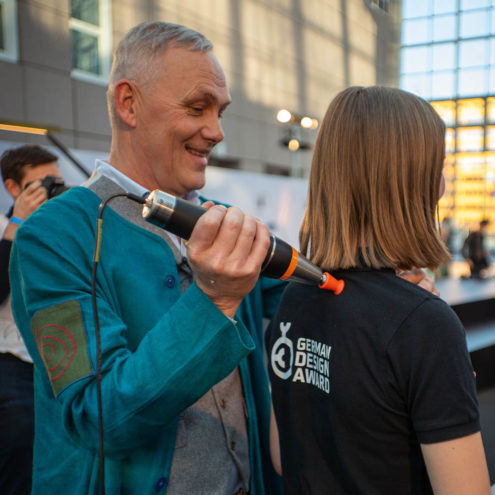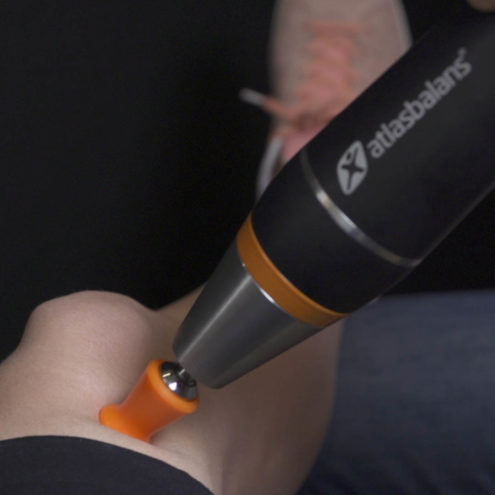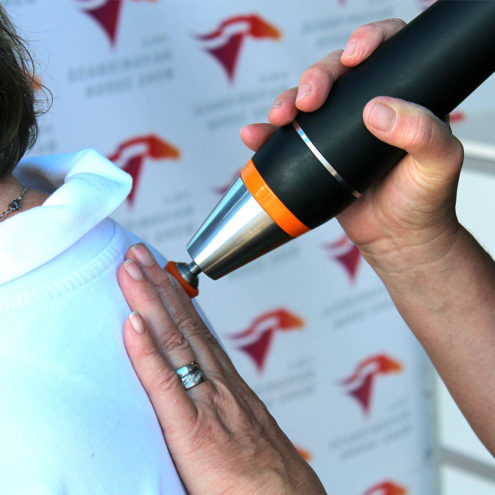Flatfoot: Symptoms and Treatment

Flatfoot, also known as pes planus, is a condition where the inner longitudinal arch of the foot is flattened so that the entire bottom of the foot is in contact with the ground. This condition can cause problems such as pain and stiffness in our feet. In this article, we will go through what flatfoot is, its symptoms and different treatment options. We will also explain how Fascia Clinics can help you with your flatfoot.
What is flat foot?
Flatfoot is a condition characterized by the collapse or lower than normal height of the inner longitudinal arch of the foot. It can affect one or both feet and can be either congenital or acquired. The inner longitudinal arch of the foot is normally arch-shaped and helps to distribute body weight and acts as shock absorption when walking and running.
Description of flat feet and its causes
Flat feet can occur for a variety of reasons. Congenital flatfoot means that the condition is present at birth and may be due to genetic factors or abnormalities in foot development. Acquired flatfoot develops later in life and can be caused by various factors such as overuse, injury, arthritis, or weakness of the ligaments and muscles of the foot.
Other common causes of acquired flatfoot include:
Ageing: With age, ligaments and tendons in the foot can become weaker, leading to collapse of the arch.
Excess weight: Extra weight can put strain on the structure of the foot and contribute to collapse of the inner arch.
Injuries: Trauma to the foot or ankle can damage the structures that support the arch.
Neuromuscular diseases: Some diseases affecting nerve or muscle function can lead to flatfoot.
The difference between congenital and acquired flat foot
Congenital flatfoot is a condition that is present from birth and is often noticed during childhood. Children with congenital flatfoot can sometimes have a flexible type, where the foot looks flat when standing but an arch becomes visible when sitting or standing on their toes. This type of flatfoot is usually painless and rarely needs treatment unless it causes discomfort.
Acquired flatfoot, on the other hand, develops later in life and is most often the result of degenerative changes or overuse. This type can be stiff and painful, and it often requires medical intervention to relieve symptoms and prevent further deterioration.
Symptoms of flat feet
Flatfoot can be asymptomatic, meaning that some individuals do not experience any problems. However, for many, the condition can cause discomfort and affect their daily lives.
Pain or discomfort when standing or walking
A common symptom of flatfoot is pain or discomfort in the feet, especially when standing or walking. The pain may be localized to the arch of the foot or spread to the heel and ankle. This is because the collapsed arch does not allow the body weight to be distributed evenly over the foot, creating an uneven load on the joints and ligaments of the foot.
Fatigue or weakness in the foot and leg
People with flat feet may experience fatigue or weakness in their feet and legs after prolonged activity. This is because the muscles in the foot and lower leg have to work harder to compensate for the lost support from the arch of the foot. This extra effort can lead to muscle fatigue and overuse.
Any swelling or tenderness along the arch of the foot
Swelling or tenderness along the arch is another symptom that can occur in flatfoot. The soft tissues of the foot can also become inflamed from the uneven loading which can also lead to swelling and tenderness. This is particularly common after physical activity or prolonged stress on the feet.
Treatment of flat feet
The treatment of flatfoot depends on the severity of the symptoms and the cause of the condition. In many cases, conservative treatments can be effective in relieving pain and improving foot function.
Orthopedic Shoe Inserts
Orthopaedic shoe inserts are a common treatment for flat feet. These inserts provide extra support to the arch and help correct the position of the foot. They can reduce pain and discomfort by improving the biomechanics of the foot and relieving pressure on foot structures. Custom-made orthoses can be made specifically for your feet and needs to provide optimal support.
Physiotherapy
Physiotherapy can play an important role in the treatment of flatfoot. A physiotherapist can guide you through specific exercises aimed at strengthening the foot and lower leg muscles. Strong muscles can provide better arch support and improve foot function. Exercises may include:
Toe raises: To strengthen the calf muscles.
Arch training: Exercises aimed at strengthening the small muscles of the foot.
Balance training: To improve proprioception and stability.
Surgical procedure
In severe cases of flatfoot, where conservative treatments have not been effective, surgery may be necessary. Surgical procedures may include:
Osteotomy: Adjustment of the position of the bones to recreate the arch of the foot.
Transfer: Relocation of tendons to improve foot support.
Fusion surgery: Joining joints to stabilize the foot.
Surgery is often considered as a last resort and is only considered when other treatment methods have failed and when pain and disability are significant.
How can we help you with your flat foot?
At the FasciaClinics, we specialize in seeing and treating the body from a holistic perspective. We perform fascia treatments, a highly effective wellness treatment that focuses on treating and maintaining the fascia in our body. The fascia is the network of connective tissue that binds and permeates everything in our body. All cells, tissues (even bone tissue), muscles and organs contain fascia.
Fascia treatment focuses on releasing tension and adhesions in the fascia and increasing its flow. This allows us to have an improved mobility of the body with less pain and improved self-healing.
During the visit, we analyze the whole body to see where compensations and imbalances are and how they have spread. If there is an imbalance in the body, there is a risk that they will spread and affect other structures. That’s why it’s very important to seek help quickly as soon as you get any symptoms. Fascial treatment for flat feet involves balancing the body to even out the stresses on the structures around the foot and ankle. We also focus on softening the plantar fascia and increasing its flow to reduce pain and stiffness. The treatment is done both manually and mechanically with gentle vibrations. A less stiff plantar fascia with an increased flow also makes it easier for the cells to absorb substances. The treatment is not painful and is often experienced as very pleasant. Remember that more treatments may be needed to achieve good results and that it is important to adjust your activities between treatments. If you do activities that make the symptoms worse, it will take longer to get rid of the condition.
 Search
Search





